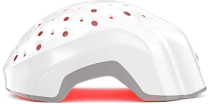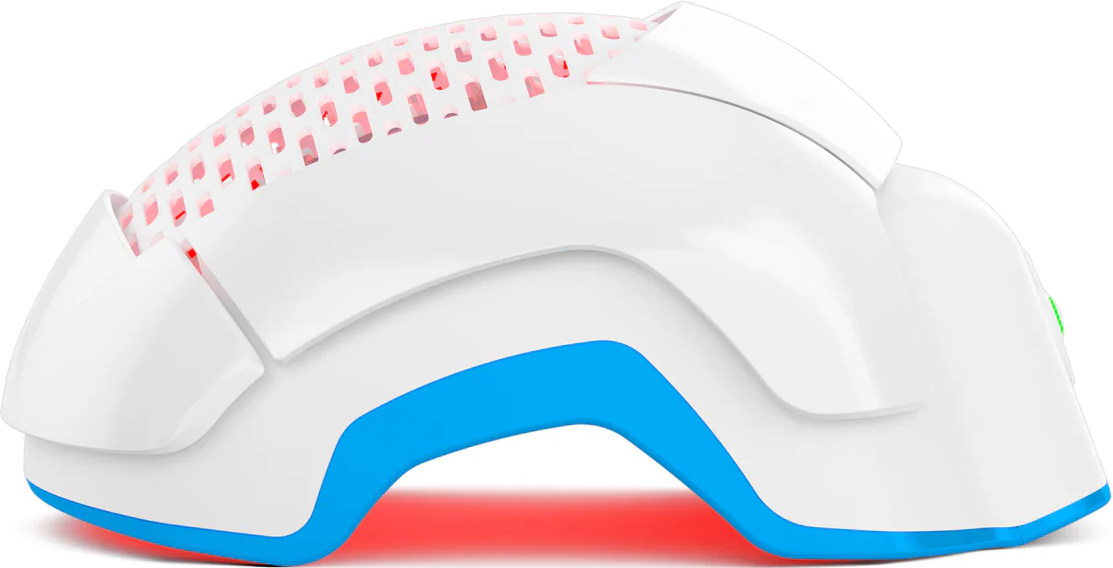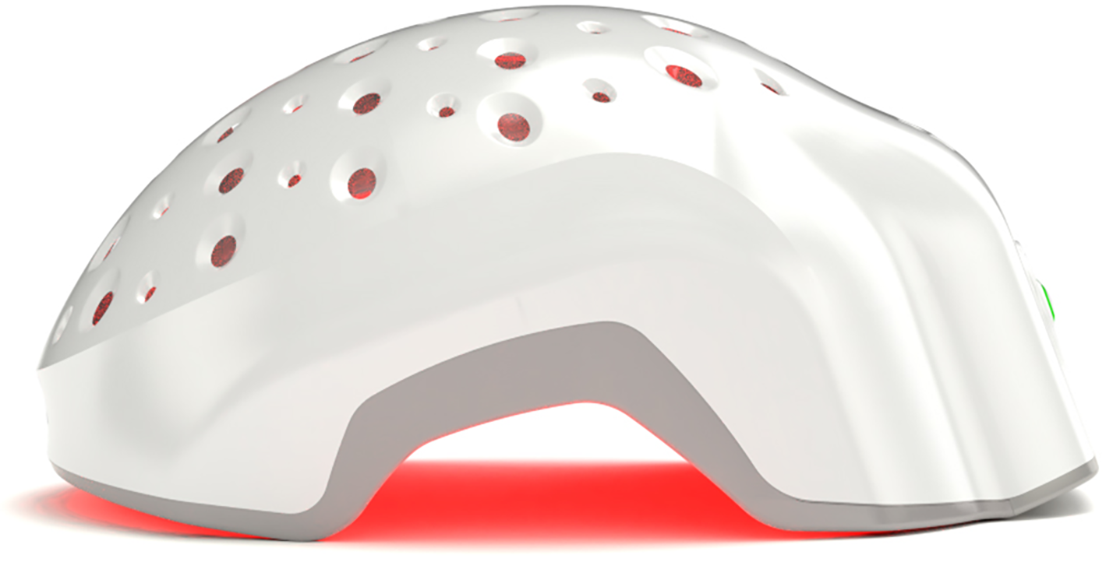Hair regrowth isn’t just about keeping what you have or filling in the gaps. There’s a curious pattern that emerges, especially with certain therapies: the Bullseye Growth Effect (BGE) of hair. This effect describes how hair often begins to grow back from the outer edges of thinning areas, working its way inward to create a sort of “bullseye” formation. If you’ve ever wondered why regrowth seems to circle in on itself rather than sprout up all at once, you’re about to get some answers.
The Bullseye Growth Effect of hair is a visible sign that your follicles are responding in stages, which can be incredibly motivating—if you know what to look for. And knowing what to look for is exactly where most people miss out. The human eye adapts quickly, meaning we often miss gradual improvements and overlook those early “bullseye” rings of progress that are genuinely worth celebrating.
So, what causes the BGE, and why does hair regrowth happen in these concentric circles?
The Challenge of Measuring Hair Growth
Measuring hair growth progress may sound simple in theory, but in practice, it’s a different story. Unlike a haircut, where you can see the results instantly, tracking hair regrowth over time – particularly with treatments like laser therapy – requires patience and a keen eye for detail. Without clear, consistent measurements, many people find themselves guessing, wondering if that outer-to-inner hair growth they expected is really happening or just wishful thinking.
Why is this so complicated?
Hair grows in a cycle – the hair follicle regrowth cycle – with phases that include growth (anagen), transition (catagen), resting (telogen), and shedding (exogen). Since each follicle operates independently, hair grows at different rates and times, making it hard to see uniform progress across the scalp. Plus, with many treatments, regrowth often follows a specific pattern, such as outer-to-inner hair growth, leading to a “bullseye” effect as follicles on the edges start regenerating before central areas. For the untrained eye, these subtle changes can be easy to overlook, causing some to give up on treatments too early, convinced that "nothing is happening" when the follicles are actually responding.
Tools like global photography – essentially, regular scalp snapshots taken from specific angles over time – have become invaluable in tracking growth. However, even with visual aids, hair regrowth is notorious for its gradual, uneven progress. Unlike skin, which visibly heals in a continuous, predictable pattern, hair can appear patchy during the initial stages of regrowth as different follicles enter the growth phase at staggered intervals. This is why those first signs of outer-to-inner growth can be critical markers to watch, confirming that the treatment is working, even if full results are months away.
In the past, the lack of effective tracking tools often led to frustration and unrealistic expectations. People would discontinue treatment, discouraged by the slow and seemingly invisible progress. Today, thanks to advancements in tracking methods and a deeper understanding of the hair follicle regrowth cycle, patients and practitioners have better ways to objectively assess and celebrate those incremental improvements.
Tom’s Hair Growth Experience
When it comes to tracking hair regrowth patterns, there’s no better proof than Tom’s experience with laser therapy for hair regrowth. Despite diligently using his Theradome hair growth helmet, Tom initially felt he wasn’t seeing much change. Turns out, it wasn’t his hair holding out on him—it was his eyes. Over time, our eyes adapt to gradual changes, making it hard to spot progress in real-time. Only by comparing before-and-after photos did Tom see the true impact of the Bullseye Growth Effect. His hair was indeed filling in from the outer edges toward the center, forming that telltale "bullseye" shape.
Tom’s case is a classic example of why objective progress tracking matters in hair restoration, especially for men. Without consistent visual documentation, he may have missed how well the laser therapy was working, dismissing the slow-but-steady regrowth happening across his scalp. His experience underscores an important truth: with treatments that follow the Bullseye Effect, patience and a good photo log are your best friends, particularly since the crown is usually the last spot to fill in and requires the most patience.
Why Tracking Hair Growth Progress Matters
When it comes to hair regrowth, progress can be sneaky. Sure, you might feel like nothing’s happening after weeks of treatment, but that’s where the power of tracking hair growth progress steps in—and the impact can’t be overstated. Visual tracking methods, such as global photography and regular snapshots from consistent angles, can be game-changers, providing hard proof that your hair is responding to treatment, however gradual it may seem.
The stages of hair regrowth don’t happen overnight, and most of us need clear, visual cues to stay motivated. Hair growth operates in phases: the anagen phase (growth), catagen phase (transition), telogen phase (rest), and finally, exogen phase (shedding). Without tracking, it’s easy to overlook these natural phases and dismiss real progress as “just a good hair day.” Regular photos over time reveal patterns that reflect both hair growth rates and recovery consistency, essential indicators for anyone monitoring treatment effectiveness.
Tracking is also the best reality check. If you’ve just started treatment, it can be tempting to expect miracle results. However, measurable growth often takes months, not weeks. Documenting progress visually lets you see the incremental growth that’s happening—even when it’s subtle. Watching the bullseye growth effect unfold as hair starts to fill in from the outer edges can be hugely satisfying, reinforcing that the process is working as intended. For the best results, consider taking progress photos every 2-3 months to capture these changes accurately. For tips on taking high-quality progress photos, check out our guide on how to take pictures properly.
Reducing Hair Loss vs. Growing New Hair: What’s the Difference?
Reducing hair loss and growing new hair are two goals that sound alike but operate on very different levels when it comes to achieving visible results. Let’s clear up why these two approaches work differently and why understanding this distinction is essential for setting realistic hair restoration expectations, especially when looking for genuine hair density improvement.
Reducing Hair Loss: Slowing Down the Shedding
Reducing hair loss essentially means stopping or slowing down the rate at which hair falls out. Treatments like DHT blockers or scalp-friendly lifestyle changes aim to minimize shedding. When shedding decreases, hair can appear fuller because you’re not losing it as quickly. This effect can sometimes create the impression of improvement in hair density, but here’s the catch—it’s not the same as gaining new hair. You’re essentially holding on to what’s already there, which can give the illusion of increased thickness but won’t actually contribute to new growth in thinning areas
Growing New Hair: True Regrowth Takes Time
Stimulating new growth is a whole different ballgame. It means activating dormant or weak follicles to start producing hair again. This process requires treatments that target follicular health and kickstart hair growth from the root. Regrowth treatments like minoxidil, low-level laser therapy (LLLT), and specific nutrient-rich diets work at the follicular level, and results don’t happen overnight. True regrowth takes consistent effort and patience, typically unfolding over several months as new hair slowly fills in those sparse areas.
The Bullseye Growth Effect: How It Focuses on the Most Affected Areas
The Bullseye Growth Effect is all about starting where it’s needed most. Rather than regrowing hair evenly across the scalp, this pattern focuses on filling in the most recently thinned areas first. Here’s the science: hair follicles that haven’t been dormant for long are more responsive to stimulation, so they’re the first to react to regrowth treatments. This outer-to-inner filling process naturally forms a “bullseye” as the edges respond to treatment faster than older bald spots.
The bullseye pattern hair growth effect provides more than just aesthetics – it’s a visible marker of progress. For those worried that their regrowth efforts aren’t working, seeing the bullseye take shape over time is a sign that follicles are reactivating in stages. And while older, longstanding bald areas may take longer to respond, the gradual spread of growth inward keeps up motivation.
So, how does the bullseye hair restoration process work?
Treatments like low-level laser therapy (LLLT) enhance blood flow for hair growth and deliver energy to the follicle cells, prioritizing the outer ring of recent hair loss. As this process continues, it often takes months to see regrowth closer to the crown, but it’s evidence that your follicles are responding just as expected, layer by layer.
The Concentric Pattern of Hair Loss and Regrowth
Hair regrowth doesn’t happen randomly—especially if you’re dealing with bullseye pattern hair growth. Both men and women experience specific regrowth patterns, but there’s a bit of a twist in how it all unfolds. When hair follicles reactivate, they often follow an “outside-in” approach, meaning that the outer edges of thinning areas tend to sprout first, gradually filling toward the center, forming what’s often called a bullseye hair restoration effect.
Why does this happen? It’s largely due to the way blood flow, follicle density, and hormonal activity play out on different parts of the scalp. Men typically experience a circular or concentric regrowth pattern, where areas closest to the hairline and crown—the two areas most affected by hair loss—are slower to fill in compared to the outer edges. For women, this can look a little different, usually presenting as an oval-shaped regrowth pattern due to a more diffuse form of thinning. While men’s regrowth centers around classic bald spots, women’s regrowth fills in from the broader thinning areas back toward fuller regions.
This Bullseye Growth Effect underscores the need for a long-term commitment to hair regrowth treatments.
Why?
Because true regrowth takes time, and the Bullseye Effect is all about building up density in stages. Patients may notice rings of new hair around the perimeter of previously thinning areas, a sign that treatments are stimulating follicular activity in a predictable pattern. As follicles continue to respond, those inner areas will gradually catch up, completing the "bullseye."
Long-Term Commitment to Laser Phototherapy (LPT)
Laser Phototherapy (LPT) is a powerful, scientifically validated tool for stimulating hair regrowth that thrives on consistency. If you're hoping for the Bullseye Growth Effect (BGE) to make its mark, commitment to a regular LPT routine is essential.
Here’s why: LPT activates hair follicles directly at the root level, where the initial phase of the hair growth cycle happens. The laser’s low-level light energy penetrates the scalp, energizing inactive follicles and encouraging them to re-enter the growth phase while reducing excessive shedding.
And here’s the catch (or should we say the reality check?): to see real, lasting results, you can’t just treat it like a temporary routine. LPT is most effective when it's maintained over months. Think of it like exercise; miss a few sessions, and you start to lose progress. Consistent LPT sessions encourage a predictable pattern of hair loss reversal, where treated areas show more hair retention and healthier regrowth over time, moving progressively from outer areas to the center, as seen in the BGE.
For those committed to reducing hair loss and promoting regrowth, LPT offers a reliable path. By reinforcing the natural growth cycle and reducing follicular miniaturization (when hair follicles shrink due to factors like DHT), LPT helps maintain hair density. While it might take time to see visible results, that commitment is the very reason LPT succeeds where quick, temporary solutions often fail.
Conclusion
Understanding the Bullseye Growth Effect (BGE) opens up a new way to track real progress in hair restoration, showing you exactly where and how regrowth is happening. By focusing on evidence-based methods like Low-Level Laser Therapy (LPT), you can support natural regrowth that aligns with BGE patterns—reliable, science-backed solutions for long-term hair health. So, whether you’re starting treatment or already seeing those outer rings of new hair, tracking BGE can help you stay motivated and informed, reinforcing that lasting regrowth takes patience and precision.






















